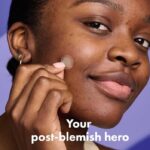Marketing and branding can be tricky for new entrepreneurs; much more goes into it other than what is sold. Sometimes, you need an extra hand to help you get more leverage.
Brand partnerships are a great way to combine individual strengths and resources into a new experience. By harnessing the power of what another business can offer, both can mutually benefit by expanding their markets and improving visibility. As the Strategic Positioning for New Brands & Products post at The Marketing Sage Blog emphasizes, finding the white space where consumer needs are unaddressed or underserved is valuable.
A collaboration can harness the strength of both brands to create a compelling and resonant marketing and branding strategy that can unite various markets and fill a unique job to be done.
Here are three examples of successful brand partnerships and what lessons entrepreneurs can use in their businesses and potential collaborations.
Ray-Ban and Meta
Ray-Ban and Meta (formerly known as Facebook) are giants in their respective industries, looking to bring something new to things people encounter or use daily, be it eyewear or social media. Their collaboration in developing Ray-Ban sunglasses with intelligent features, namely the Meta Smart Glasses, showcases how a common goal of pushing the envelope can bring about new and relevant innovations.
Cutting-edge technology from Meta combined with the authentic and iconic Ray-Ban design ushered in a new generation of wearable tech. With these intelligent eyeglasses and sunglasses, wearers can take photos and videos, listen to music, make calls, and even livestream directly to Meta’s social media platforms without using their phones. Ray-Ban’s iconic designs allow for a stylish look to boot.
These two brands saw a shift in how people used the online world and harnessed that change by integrating it into an otherwise ordinary object like eyewear. For entrepreneurs, it’s a great example of how the next innovation can come from something you encounter daily. Combining something that seems wildly different can fill a need or want in your market, just like how Ray-Ban Stories made documenting life and posting online a more seamless experience.
Go-Pro and Red Bull
GoPro and Red Bull’s partnership proved that two seemingly different markets could effectively intertwine. Both businesses have established the value of adventure and fearlessness in their brands, appealing to a thrill-seeking audience that served as common ground for their strategic alliance.
GoPro captured an athlete’s unique point-of-view using their equipment, and Red Bull would sponsor these events. Their “Stratos” campaign took their partnership to new heights, literally and figuratively, when Felix Baumgartner jumped from a space pod 24 miles above the earth with a GoPro filming the whole endeavor, showcasing how the two brands’ vision of extraordinary living can be lived out.
GoPro and Red Bull sell very different products, but their values are aligned and make for a productive partnership. This collaboration allowed them to increase their influence, share resources, and tap into each other’s markets—propelling growth on both sides. Entrepreneurs don’t need to see like-minded brands as competitors. Having the same values and vision can be grounds for a productive and mutually beneficial alliance that can take both brands to the next level.
Starbucks and Spotify
Music has been instrumental in creating the ideal atmosphere for coffeehouse culture, so much so that Starbucks ventured into the music business. But when they stopped selling physical CDs, they tapped into the digital streaming world by partnering with music streaming platform Spotify. Together, the partnership created a “music ecosystem,” in which employees get a Spotify premium subscription to curate playlists using Spotify’s massive selection, which patrons can access through the Starbucks mobile app.
Starbucks and Spotify’s collaboration effectively harnesses the power of their customers and users. By allowing employees and patrons to curate the vibe in-store, both businesses can reach the other’s market and extend their reach while staying true to their brands.
Recognizing your customer’s influence can help you work alongside them to establish branding that targets what they want from your business. They get to enjoy what you have to offer while helping strengthen your brand.
Lessons About Strategic Partnerships
Strategic Alignment: Partnerships in marketing should be strategically aligned with the overall business objectives. Seek partners whose strengths complement your weaknesses, and vice versa, to create a symbiotic relationship. Don’t view like-minded brands as competitors. Working with a brand that has the same values can produce better results. Work with different brands to reach a broader market and create a unique customer experience.
Shared Audience Access: Effective partnerships provide access to a shared audience. Identify partners with a similar target market but a non-competing product or service to expand your reach and tap into new customer segments.
Resource Optimization: Partnerships enable resource optimization by sharing costs, skills, and technology. This collaboration can lead to cost efficiencies, accelerated product development, and enhanced innovation.
Trust and Credibility: Building trust and credibility is crucial in partnerships. A positive association with reputable partners can enhance your brand image, fostering consumer confidence and loyalty.
Flexibility and Adaptability: The business landscape is dynamic, and partnerships must be flexible and adaptable. Regularly reassess and adjust the terms of collaboration to respond to market changes, ensuring continued mutual benefit.
Is it time to find a strategic partner to help grow your brand?
Photo by Claudio Schwarz on Unsplash
You can set up a time to chat with me about your marketing challenges using my calendar. Email me jeffslater@themarketingsage.com Call me. 919 720 0995. The conversation is free, and we can explore if working together makes sense. Watch a short video about working with me.





